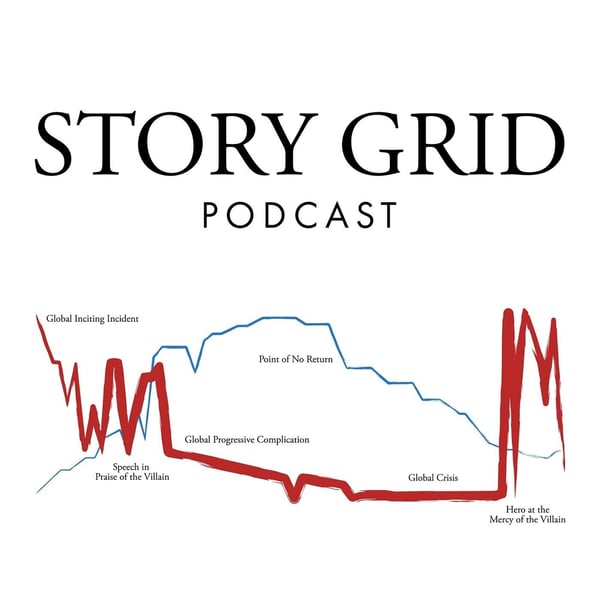How to Plan a Short Story Based on a Masterwork
Story Grid Writing Podcast
Shawn Coyne
4.8 • 767 Ratings
🗓️ 23 June 2022
⏱️ 73 minutes
🧾️ Download transcript
Summary
Transcript
Click on a timestamp to play from that location
| 0:00.0 | Hello and welcome to the Storygrid podcast. My name is Tim Graal. I'm your host and I'm a struggling |
| 0:06.0 | writer trying to figure out how to tell a story that works. Joining me shortly is Sean Coyne. He's |
| 0:12.0 | the creator and founder of StoryGrid and an editor with over 30 years of experience. Along with |
| 0:18.1 | him is Leslie Watts, our editor-in-chief of StoryGrid Publishing, and Daniel Kiyoski, the chief academic officer at Storygrid University. |
| 0:26.6 | So this episode is a little strange. So we've been doing the whole analysis and in-depth look at Ed McBain's short story eyewitness. And now we're ready to |
| 0:39.7 | transition into me writing my scene, my short story, based on that masterwork. So in this episode, |
| 0:47.5 | we begin talking about that. And as you see, it starts to go off the rails. And so we thought |
| 0:53.7 | about, you know, is this really an episode? |
| 0:55.8 | We should keep in here? Should we edit it in some way? And we decide to just go ahead and leave it in. |
| 1:01.4 | You know, we've been running this Storygood podcast for over 260 episodes. And one of the things |
| 1:06.0 | we try to do here is show what it's really like for an editor and a writer to work together. |
| 1:12.1 | And for a long time, we've had a rule that we don't talk about my writing outside of this |
| 1:17.3 | podcast. We don't want to have anything behind the scenes. We want to show you what goes on. |
| 1:22.0 | And so this is what it looks like when an editor and a writer can't seem to get on the same |
| 1:26.6 | page and they're not understanding |
| 1:27.9 | each other and they're both kind of getting frustrated. And along with that, what we realized |
| 1:33.1 | is like we made a couple of fundamental mistakes. One of the mistakes is a mistake that drives us |
| 1:38.7 | crazy. We hate when writers take these vague ideas of writing. They haven't put anything we've taught |
| 1:46.2 | into practice. And they kind of think about like these vague kind of hypothetical questions and |
| 1:51.2 | they just start throwing them out without actually going and doing the writing. And so we realized |
| 1:56.1 | like that's what we did here is instead of me actually trying to write a scene and then having |
| 2:00.7 | something to get feedback on, I started asking instead of me actually trying to write a scene and then having something |
... |
Please login to see the full transcript.
Disclaimer: The podcast and artwork embedded on this page are from Shawn Coyne, and are the property of its owner and not affiliated with or endorsed by Tapesearch.
Generated transcripts are the property of Shawn Coyne and are distributed freely under the Fair Use doctrine. Transcripts generated by Tapesearch are not guaranteed to be accurate.
Copyright © Tapesearch 2025.

